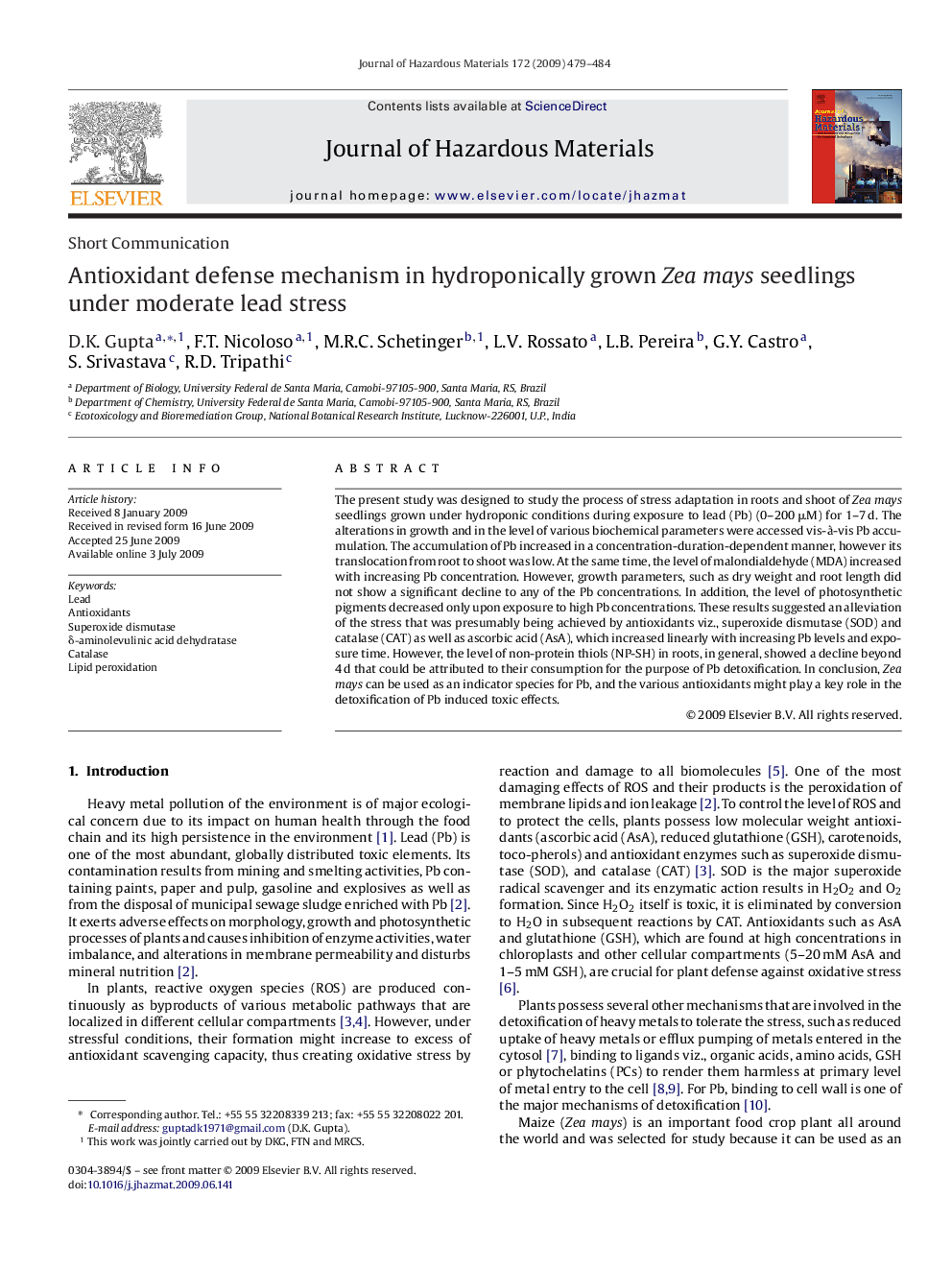| Article ID | Journal | Published Year | Pages | File Type |
|---|---|---|---|---|
| 581090 | Journal of Hazardous Materials | 2009 | 6 Pages |
Abstract
The present study was designed to study the process of stress adaptation in roots and shoot of Zea mays seedlings grown under hydroponic conditions during exposure to lead (Pb) (0-200 μM) for 1-7 d. The alterations in growth and in the level of various biochemical parameters were accessed vis-à -vis Pb accumulation. The accumulation of Pb increased in a concentration-duration-dependent manner, however its translocation from root to shoot was low. At the same time, the level of malondialdehyde (MDA) increased with increasing Pb concentration. However, growth parameters, such as dry weight and root length did not show a significant decline to any of the Pb concentrations. In addition, the level of photosynthetic pigments decreased only upon exposure to high Pb concentrations. These results suggested an alleviation of the stress that was presumably being achieved by antioxidants viz., superoxide dismutase (SOD) and catalase (CAT) as well as ascorbic acid (AsA), which increased linearly with increasing Pb levels and exposure time. However, the level of non-protein thiols (NP-SH) in roots, in general, showed a decline beyond 4 d that could be attributed to their consumption for the purpose of Pb detoxification. In conclusion, Zea mays can be used as an indicator species for Pb, and the various antioxidants might play a key role in the detoxification of Pb induced toxic effects.
Keywords
Related Topics
Physical Sciences and Engineering
Chemical Engineering
Chemical Health and Safety
Authors
D.K. Gupta, F.T. Nicoloso, M.R.C. Schetinger, L.V. Rossato, L.B. Pereira, G.Y. Castro, S. Srivastava, R.D. Tripathi,
